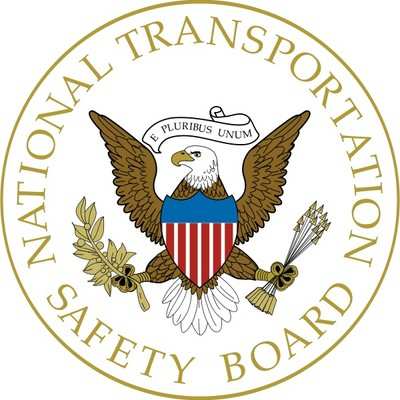Inflight Separation Of The Right Wing As A Result Of The Manufacturer’s Application Of A Bolt And Nut In The Upper Wing Strut Attachment Point That Was Inconsistent...
Location: East Hampton, New York Accident Number: ERA23FA007
Date & Time: October 6, 2022, 12:29 Local Registration: N46PD
Aircraft: Seamax Aircraft M-22 Aircraft Damage: Substantial
Defining Event: Aircraft structural failure Injuries: 1 Fatal
Flight Conducted Under: Part 91: General aviation - Personal

Analysis: The pilot was conducting a local flight when, about 15 minutes into the flight, a witness heard a loud “crack” and saw a wing separate and the airplane spiral down into the water. Postaccident examination of the wreckage revealed that the right wing had separated from the airplane and came to rest in trees about 700 ft from the main wreckage. The airplane incorporated a foldable wing design that was provided as an option by the manufacturer. When on the ground, the wings detached from the upper fuselage and rotated about the wing strut attachment bolts to fold against the fuselage for transportation or storage.
Examination of the right wing revealed a shear fracture of the nut threads at the location where the outboard end of the wing strut attached to the lower side of the wing via a bolt. The fractured nut thread piece showed indications of ductile overstress fracture. Following the nut fracture, the strut separated from the attachment bolt, leaving the bolt intact in the fitting attached to the wing spar. The wing rotated upward from air loads following the strut separation, resulting in overload upward bending fractures at the wing root. Witness marks and fracture patterns at the wing root were consistent with the wing being locked in place at the time of the failure. The bolt contact surfaces on the thread flanks showed indications of repeated contact loading.
Examination of the corresponding nut on the left wing revealed threads that were partially fractured, rolled, and displaced, with similar rolled thread deformation as observed on the right wing nut. Hardness and dimensional checks of the nut from the left wing strut outboard attachment were consistent with the specified dimensions and material tensile strength requirements specified by the airplane manufacturer. The similarity in damage patterns and evidence of repeated contact loading signatures in both nuts suggest that the nut from the right wing strut outboard attachment likely fractured due to repeated contact loading of a loose joint, resulting in a progressive overstress fracture of the nut threads. The partially fractured threads in the left wingstrut attachment nut likely represented an earlier stage of the failure progression in the joint.
The manufacturer specified the nut used for attaching the upper end of the wing strut to the wing as an AN364-524 thin profile self-locking nut, which could be all metal or could have a non-metallic insert (the nuts in the accident airplane had a non-metallic insert). The AN364-524 specification has been inactive for design since 1957 and was superseded by MS21083 (for the non-metallic locking option) in 1991. The MS21083 specification noted that these nuts were intended for use in shear applications; however, review of the aircraft design suggests that the bolt at the outboard attachment location would be loaded primarily in tension.
Therefore, the use of the nut at the wing strut outboard attachment location would appear to be inconsistent with the design intent and usage limitations for the MS21083 nut. Additionally, the attachment bolts at each end of the struts served as axes of rotation for folding the wings for storage; however, a positive locking device that ruptured or sheared material before joint clamping forces were relieved was not used at either of the wing strut attachment joints. Since the integrity of the joints attaching the wing struts was critical to the safety of flight, the use of the MS21083 nut without a positive locking device appears to be inconsistent with its usage limitations.
Following the accident, the airframe manufacturer issued a safety directive, which recommended replacement of the existing bolts and non-metallic locking nuts with a drilled bolts, castellated nuts, and cotter pins.
Probable Cause and Findings: The National Transportation Safety Board determines the probable cause(s) of this accident to be --
An inflight separation of the right wing as a result of the manufacturer’s application of a bolt and nut in the upper wing strut attachment point that was inconsistent with the nut design intent and usage limitations.
 NTSB Prelim: Cirrus Design Corp SR20
NTSB Prelim: Cirrus Design Corp SR20 ANN's Daily Aero-Linx (11.30.25)
ANN's Daily Aero-Linx (11.30.25) ANN's Daily Aero-Term (11.30.25): Wind Shear Escape
ANN's Daily Aero-Term (11.30.25): Wind Shear Escape Aero-News: Quote of the Day (11.30.25)
Aero-News: Quote of the Day (11.30.25) Airborne 11.26.25: Bonanza-Baron Fini, Archer v LA NIMBYs, Gogo Loses$$$
Airborne 11.26.25: Bonanza-Baron Fini, Archer v LA NIMBYs, Gogo Loses$$$



